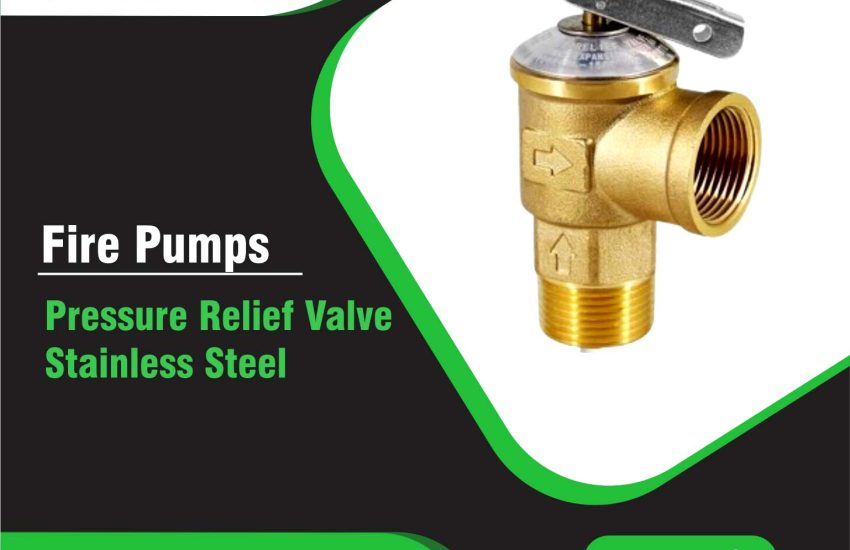Pressure Relief Valve Stainless Steel is a vital component in various industrial systems, specifically designed to protect equipment and pipelines from over pressure. Constructed from stainless steel, these valves offer outstanding corrosion resistance, durability, and reliability in high-pressure environments. They regulate and maintain system pressure, ensuring the safety and efficiency of hydraulic, pneumatic, and fluid control systems.
In this article, we will explore the key specifications, features, and benefits of the Pressure Relief Valve Stainless Steel, emphasizing its importance in industrial applications.
Key Specifications of Pressure Relief Valve Stainless Steel
1. Material Composition
The primary material used in Pressure Relief Valve Stainless Steel is high-quality stainless steel, which provides excellent corrosion resistance and durability in harsh environments. Stainless steel alloys, such as 304, 316, and 316L, are commonly used in these valves. These alloys resist corrosive substances, high temperatures, and pressure fluctuations, ensuring that the valves perform reliably over time.
2. Pressure Range
Pressure relief valves made from stainless steel are built to handle a wide range of pressures. Typically, these valves operate at pressures ranging from low pressure (less than 100 psi) to high pressure (more than 10,000 psi), depending on the application. They open and release pressure when the system exceeds the preset limit, protecting equipment from damage and ensuring the smooth functioning of the system.
3. Valve Size and Connection Types
Pressure Relief Valve Stainless Steel comes in a variety of sizes and connection types to accommodate different system requirements. Common connection types include threaded, flanged, and welded fittings, making these valves compatible with a wide range of pipes and equipment. Valve sizes range from 1/4 inch to 6 inches, ensuring compatibility with different flow rates and pressure specifications.
4. Temperature Range
Stainless steel pressure relief valves perform efficiently over a broad temperature range. These valves can withstand temperatures from -50°F to 450°F (-45°C to 232°C), with some models even capable of handling higher temperatures. This feature makes them suitable for industries dealing with extreme temperature conditions, such as chemical processing, oil and gas, and steam systems.
5. Flow Rate and Set Pressure
These valves come in various flow rate capacities, tailored to meet the needs of your system. The set pressure is adjustable, allowing operators to set the exact pressure point at which the valve opens and releases excess pressure. This customization ensures the safety and performance of the system under varying conditions.
6. Actuation Type
Pressure relief valves are available in different actuation types, such as spring-loaded, pilot-operated, or diaphragm-operated. The spring-loaded valve is the most common type, where the spring holds the valve shut until the system pressure surpasses the set point. When this happens, the valve opens to relieve pressure and protect the system.
Features and Benefits of Pressure Relief Valve Stainless Steel
1. Corrosion Resistance
The stainless steel construction of these valves offers exceptional protection against corrosion, making them ideal for use in harsh environments. Whether exposed to saltwater, chemicals, or high-humidity conditions, these valves perform reliably and extend the lifespan of the system. As a result, they are perfect for industries like marine, chemical processing, and water treatment.
2. Durability and Longevity
Stainless steel pressure relief valves are known for their durability and longevity. The robust material handles high-pressure cycles without significant wear or degradation. This durability makes them a cost-effective investment for systems requiring long-term reliability and performance.
3. High-Temperature Resistance
Stainless steel valves excel in high-temperature environments. These valves maintain strength and functionality even in extreme temperatures, up to 450°F (232°C), and in some cases, even higher. Their ability to handle such temperatures makes them indispensable in industries like steam systems, power plants, and petrochemical facilities.
4. Precision and Accuracy
Stainless steel pressure relief valves provide precise control of system pressure. They open and close at specific pressure points, ensuring the system operates safely and effectively. By maintaining the desired pressure levels, these valves prevent damage to critical equipment, reduce downtime, and increase the overall efficiency of the system.
5. Easy Maintenance
These valves are designed for easy maintenance and servicing. With a straightforward, reliable design, regular inspections and maintenance can be performed without significant downtime. Additionally, many models feature replaceable parts, such as seals and springs, making repairs efficient and cost-effective.
6. Versatility in Application
Pressure Relief Valve Stainless Steel is versatile, suitable for use in a variety of industries, including:
- Chemical Processing: Protecting pipes, tanks, and reactors from over pressure.
- Oil and Gas: Regulating pressure in pipelines and processing equipment.
- Water Treatment: Preventing over pressure in water distribution systems.
- Power Generation: Managing pressure in steam and hydraulic systems.
- Food and Beverage: Maintaining safe pressure levels in processing equipment.
Applications of Pressure Relief Valve Stainless Steel
Pressure relief valves made from stainless steel are widely used across multiple industries, including:
- Oil and Gas: These valves regulate pressure in pipelines, preventing damage to infrastructure and ensuring safety.
- Chemical Processing: They maintain pressure in reactors, tanks, and piping systems, protecting equipment from over pressure and leaks.
- Food and Beverage: Stainless steel pressure relief valves control pressure in food processing plants, ensuring system safety.
- Water Treatment: They safeguard water distribution systems from excessive pressure, maintaining system integrity.
- Power Plants: In steam systems, these valves control pressure to prevent accidents and ensure smooth operation.
Conclusion
A Pressure Relief Valve Stainless Steel plays a crucial role in protecting industrial systems from over pressure. With its corrosion resistance, high-temperature tolerance, durability, and precision control, this valve ensures optimal system performance and safety. Whether used in oil and gas, chemical processing, or water treatment, these valves offer reliable, long-lasting protection for critical systems. By investing in a stainless steel pressure relief valve, industries can enhance system safety, reduce maintenance costs, and increase overall efficiency.


